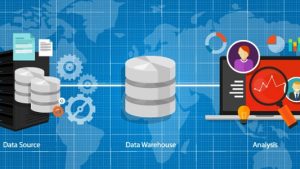Agentic AI: From Automation to Orchestration — A Strategic Dialing of the Source-to-Pay Engine

The automation story in enterprise operations has long been about doing things faster. But a new frontier is emerging — one where the question is less about speed, and more about autonomous orchestration. Enter agentic AI: systems that not only execute a workflow step, but interpret context, reason, decide, and re-route dynamically across multiple systems.
For procurement and source-to-pay (S2P) functions, this isn’t just another wave of tech. It signals a mindset shift — from digitisation of tasks to re-engineering of decision-flows. In an era of complex regulatory regimes, multi-geography supplier ecosystems and dynamic tax formats, agentic AI offers a way to embed adaptability, scale and real-time governance into the S2P backbone.
The Strategic Imperative for Procurement & Finance
Consider the classic S2P cycle: sourcing → contracting → invoice processing → payments → analytics. In large enterprises this cycle spans dozens of systems, cross-border data hubs, multiple regulatory frames and countless decision nodes. Traditional automation (bots, rule engines) handled parts of these flows—but each change in tax law, supplier risk profile or invoice format demanded manual overrides, re-engineering or drift.
Agentic AI proposes something different: a system that continuously senses change, reasons across domains (supplier risk + tax compliance + spend analytics), chooses what to do (escalate, reroute, validate), acts (update systems, trigger workflows) — and learns from outcomes. For procurement heads (CPOs), CFOs and shared‐services leaders, that shift matters because:
- Agility becomes structural, not episodic. New tax validation means not just a patch, but self-adaptive workflow.
- Governance is built-in, not bolt-on. Agents monitor for compliance, supplier risk, duplicate vendors, poor contract terms — without relying solely on manual controls.
- Scale is not linear. As one report puts it: “Self-optimising processes compress cycle-times from days or hours to minutes or seconds.” Informatica+1
- Cost and margin outcomes shift from incremental to strategic. In advanced industries, agentic AI is described not just as a productivity lever, but as “a new revenue engine … that could reshape cost structures, organisational models and leadership KPIs.” McKinsey & Company
What the Evidence Reveals — With a Cautious Note
The promise is high, yet the path is nuanced. Some of the most illuminating data points:
- Research shows that 89 % of CIOs consider agentic AI a strategic priority, and about 29 % of companies reported they are already using it, with 44 % planning adoption within a year. IBM TechXchange Community
- Reports project that by 2028, 33 % of enterprise software applications will include agentic AI, and 15 % of day-to-day work decisions will be autonomously made via agents. Reuters+1
- But here’s the caveat: Gartner predicts that over 40 % of agentic AI projects will be cancelled by end of 2027 — signalling that many initiatives struggle to move from pilot to scale. Reuters
- Security and governance also demand attention: a survey found 96 % of organisations see AI agents as a growing security threat, and only 44 % have formal policies in place. TechRadar
For S2P leaders this means: Yes, agentic AI is real and strategic — but execution is hard and the margin for error is narrow.
What Agentic AI Looks Like in the S2P Context
To move from concept to praxis, here are examples of how agents can reshape S2P workflows:
- Supplier Onboarding & Risk Compliance
An agent ingests supplier registration data, checks against sanctions lists, assesses ESG indicators, merges vendor master records, assigns risk ratings, and either auto-approves or escalates. All recorded for audit.
- Contract Renewal & Clause Monitoring
A contract agent monitors upcoming renewals, reads contract text, benchmarks market terms, checks supplier performance and flags sub-optimal terms. It triggers the right sourcing workflow, updates vendor master, and alerts procurement.
- Invoice Processing with Autonomous Escalation
Beyond capture and matching, an agent recognises pattern anomalies (e.g., duplicate invoice history, tax format mismatch by country, early payment discounts missed) and decides whether to auto-correct (if low-risk) or route to human (if high-risk). It updates dashboards and links to cash-flow forecasting.
- Master Data Integrity & Compliance
An agent monitors vendor, customer and material master records, detects duplicates/inconsistencies, triggers cleanup workflows, flags non-compliant country-specific fields (e-invoicing format etc.), and learns from past corrections to reduce future manual involvement.
These flows blur boundaries—procurement, finance and IT converge. The agent becomes a synthetic orchestrator of S2P operations.
Key Considerations for Leaders
Given the scale and complexity of agentic adoption, a strategic lens is essential:
- Data & AI readiness: These systems depend on high-quality, unified data across vendor portals, ERPs, sourcing platforms. If underlying data is fragmented or governance weak, agents don’t solve—they amplify errors. Real-world journal articles in SAP landscapes show roughly 31 % improvement in data quality after deployment. EA Journals
- Use-case Discipline: Not every process merits an autonomous agent. According to one framework, agentic enablement can be “as much as 150 × more resource-intensive than traditional automation.” HFS Research Select where decision complexity, volume, orchestration need and value density meet.
- Governance & auditability: With agentic agents making decisions, you must treat them like human stakeholders — with traceable logs, escalation rules, override options.
- Change leadership & operating-model shift: The role of procurement, finance, and shared-services teams shifts from execution to supervision, exception-management and strategy.
- ROI realism & time-horizon: Although adoption momentum is high, timelines to value remain measured: companies are advised to expect 18–24 months to see real benefits. The Economic Times
What Good Looks Like: Road-Map for Action
For S2P functions and procurement organisations, a structured deployment roadmap is advisable:
- Phase 1: Pilot high-volume, rule-rich workflows: e.g., invoice duplication detection, vendor data cleanup.
- Phase 2: Embed autonomous escalation logic: Have the agent decide and act on low-risk flows; human-in-loop remains for complex flows.
- Phase 3: Expand across sources-to-pay boundary: Agents link sourcing → contracting → invoicing → payment.
- Phase 4: Governance and continuous improvement: Agents log decisions, audit triggers, monitor drift, retrain and evolve.
- Phase 5: Business-model transformation: Use agentic orchestration as a competitive lever—offer supplier networks as service, shift to outcome-based procurement, move from cost-centre to business-partner.
Conclusion
Agentic AI is not simply the next wave of automation—it represents a shift in the operational architecture of the enterprise. For procurement, finance and shared-services leaders, it offers a path to embed agility, governance and scale into the S2P backbone.
But success will not come from plugging in an “agent module” and expecting immediate transformation. It requires strong data foundations, disciplined use-case selection, robust governance, and a willingness to evolve the operating model itself. The enterprises that treat agentic AI not as a toolbox but as a systemic orchestration layer stand to unlock not just efficiency gains—but strategic advantage in a world where speed, compliance and adaptability are the new currency.













